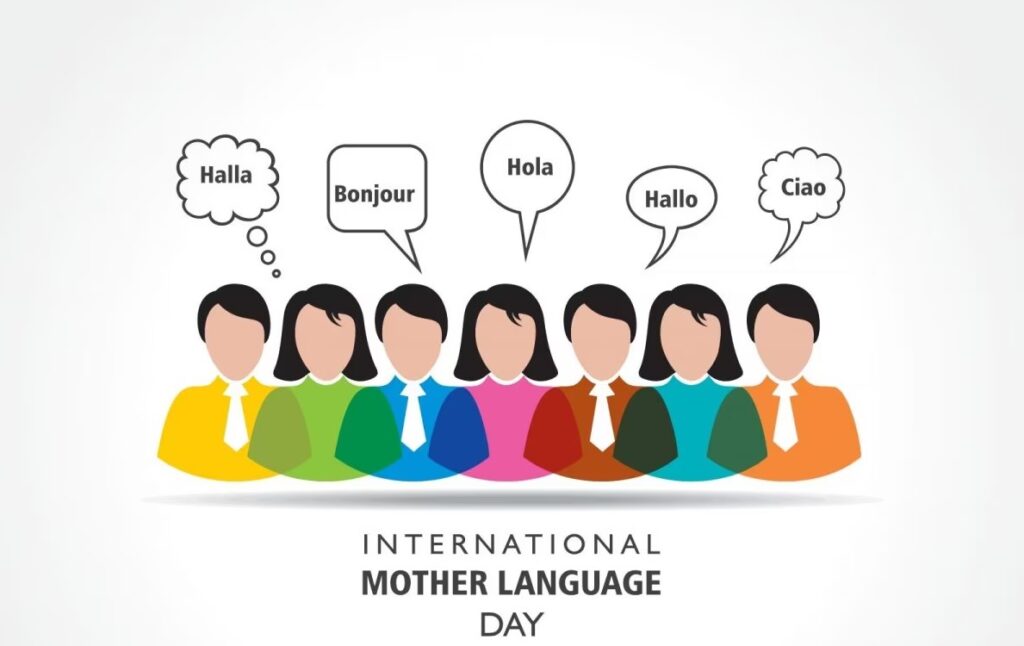Dhirendra Behera

In a bid to preserve and promote awareness of linguistic, multilinguistic and cultural diversity across the globe, every year 21st February is celebrated as International Mother Language Day (Matrubhasha Divas).It was first approved at the 1999 United Nations Educational Scientific and Cultural Organization’s (UNESCO) General Conference and since 2000, this day has been observed throughout the world. This day represents an unfortunate incident that happened on 21, February1952 when four students of the University of Dhaka, East Pakistan (currently known as Bangladesh) sacrificed their lives to save their mother tongue Bangla.
This year2024, the theme for the International Mother Language Day is “Multilingual education is a pillar of intergenerational learning.” It will highlight the importance of implementing multilingual policies and practices as a pillar to the achievement of Sustainable Development Goal for which calls for inclusive, quality education and lifelong learning for all as well as to the objectives of the International Decade on Indigenous Languages (2022-2032).
In a statement, the UNESCO body said, it is an opportunity to remind the international community that multilingual education enhances learning when the language of instruction is the learner’s first language. The use of learners’ own language for literacy and learning provides a solid pillar for education and for transfer of skills and knowledge to additional language. Learning in one’s first language facilitates understanding and interaction and further develops critical thinking. It strengthens self-confidence and self-esteem and stimulates active participation. In addition to boosting learning, multilingual education contributes to opening the doors to intergenerational learning, the preservation of culture and intangible heritage, and the revitalization of languages.
If we look at the current situation, the world witnessed a severe downfall in learning domain in past few years because of the school closures during COVID-19 pandemic. According to World Bank et al. and UNESCO (2022), before the epidemic, 57% of students in low and middle- income countries could not read and understand a short story by the end of the elementary school. By 2022, this percentage had increased to 70%. In many countries more than 90% students do not receive their education in a language they can comprehend and pronounce (World Bank, 2023). Today, 250 million children and young people still do not attend school and 736 million adults do not master basic literacy skills. As a result, it leads to poor learning outcomes.
The world has around 7,000 languages whereas India alone has about 22 officially recognized languages, 1635 mother tongues and 234 identified mother tongues. At least 45% of estimated languages spoken in the world are endangered. Only a few hundred languages have genuinely been given a place in education systems and public domain. Also, 40% of the global population does not have access to education in a language they speak or understand.
“If you talk to a man in a language he understands, that goes to his head. If you talk to him in his own language, that goes to his heart.”-Nelson Mandela
It is worth mentioning here that India has recently announced the National Education Policy (NEP) 2020 and given maximum attention to the development of mother tongues. The policy recommends that as far as possible, the medium of instruction shall be, at least till class 5, (preferably up to grade 8 and beyond) mother tongue/vernacular/regional language.
When it comes to Odisha, Odia is the sixth Indian language to be designated a Classical language, on 20th February 2014 on the basis of having a long literary history and not having borrowed extensively from other languages. According to 2011 census, 3.1% of Indians in India are Odia speakers, of which 93% belong to Odisha. Others are using Hindi, Urdu, Bengali, Telugu etc. languages. The border areas of Odisha are influenced by people of other states to which it attached. So, in those places the language is mixed and people use a mixed version of Odia and other languages. This has created threat to Odia language and the threat is coming from our own people’s attitude. It the responsibility of Odia people to make their every effort to spread and promote the language.
Odia parents should teach their children the language and inculcate in them a habit of interacting in their mother tongue. Odia language is a very sweet and heart touching language that is easy to speak, read and write.
The author is a Faculty of J&MC, F.M. University






















